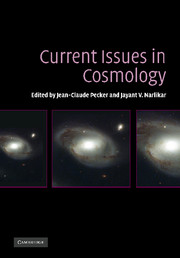Book contents
- Frontmatter
- Contents
- List of contributors
- Preface
- Part I Observational facts relating to discrete sources
- Part II Observational facts relating to background radiation
- Part III Standard cosmology
- Part IV Large-scale structure
- Part V Alternative cosmologies
- 11 The quasi-steady-state cosmology
- 12 Evidence for iron whiskers in the Universe
- 13 Alternatives to dark matter: MOND + Mach
- 14 Anthropic principle in cosmology
- Part VI Evidence for anomalous redshifts
- Part VII Panel discussion
- Index
12 - Evidence for iron whiskers in the Universe
Published online by Cambridge University Press: 15 December 2009
- Frontmatter
- Contents
- List of contributors
- Preface
- Part I Observational facts relating to discrete sources
- Part II Observational facts relating to background radiation
- Part III Standard cosmology
- Part IV Large-scale structure
- Part V Alternative cosmologies
- 11 The quasi-steady-state cosmology
- 12 Evidence for iron whiskers in the Universe
- 13 Alternatives to dark matter: MOND + Mach
- 14 Anthropic principle in cosmology
- Part VI Evidence for anomalous redshifts
- Part VII Panel discussion
- Index
Summary
Abstract
We review evidence for the widespread occurrence of iron grains in the form of long slender whiskers of radii ∼0.01 μm and lengths in the range ∼5 μm and 1 mm in the Galaxy and in extragalactic sources. Such particles are characterized by their property of being able to thermalize starlight to much longer wavelengths than is possible with standard interstellar grains. The cosmological role of iron whiskers is briefly discussed.
Introduction
The existence of iron particles as a component of interstellar grains was first proposed by Schalén (1939), an iron composition being argued at the time by analogy with the composition of iron meteorites. Many years later we proposed that an iron component of grains may arise from the mass flows from protoplanetary nebulae, cool stars, and from the outflowing material of supernova explosions (Hoyle and Wickramasinghe 1968, 1970). Such a component was also shown to be consistent with data on the extinction curve of starlight (Wickramasinghe and Nandy 1972).
In our early models, however, the iron particles were regarded as being spherical or nearly spherical in shape, with radii typically ∼0.01 μm. Particles in the form of slender whiskers were considered only much later to account for the high grain emissivities required in certain galactic infrared sources, and also as a possible contributor to the cosmic microwave background (Wickramasinghe et al. 1975, Edmunds and Wickramasinghe 1975). The extinction properties in the visual and ultraviolet waveband for iron whiskers would be nearly identical to those of spherical particles of the same radius, provided the whiskers were in random orientation.
- Type
- Chapter
- Information
- Current Issues in Cosmology , pp. 152 - 163Publisher: Cambridge University PressPrint publication year: 2006
- 2
- Cited by



